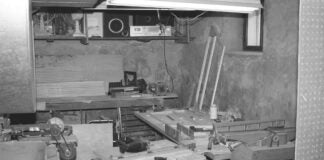Newsline
Continue to the categoryDIY Edge Tool for Canopy Skirts
A simple DIY tool puts a sharp crease into canopy skirts when edge-breaking tools fall short—just bring some wrist strength.
Internal Power Milestone—EarthX Battery for the F1 Rocket Project
The F1 Rocket project hits a major milestone—electrical and avionics systems now run independently on EarthX batteries.
KitFlight Modernizes the Aircraft Builder’s Log
KitFlight makes logging your Experimental aircraft build intuitive, flexible, and future-proof—with powerful features and no subscription required.
USB-Powered CO Monitor from Radiant
Radiant's new $29.95 USB CO monitor lights up red if danger's in the air—and might just beat those old stick-on cards for reliability.
BARC Gets Ready To Bite
The Biplane Air Racing Class (BARC) is back for 2025 with new rules and new racers—including two-seaters with big-block engines. Expect to see them at Roswell this September.
600 MPH Jet Racing?
A concept 600 mph jet course spotted at Roswell hints at a new level of pylon racing—think faster jets and 14-mile laps. Bring it on!
In Case You Missed It
Homespun Router Table
I’m drawn to the simple, low-cost end of the airplane market. The first airplane...
Flight Testing
Personnel roles, emergency contingencies, communications-there are many moving parts involved in the first flight of a homebuilt. Paul Dye catalogs them and offers a sample flight plan that worked for him.
Flight Review: Lancair Launches the Piston Evolution
Doug Rozendaal samples the new piston version of the Lancair Evolution and, as with the turbine Evo, finds much to admire.











